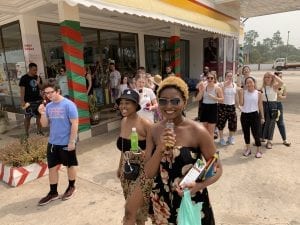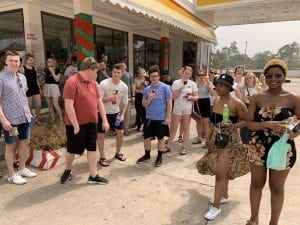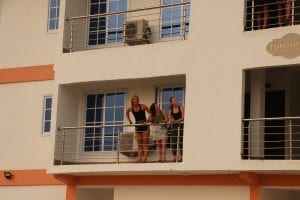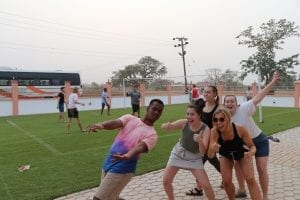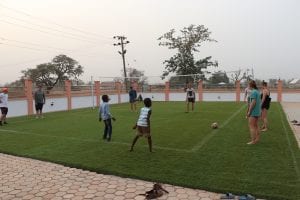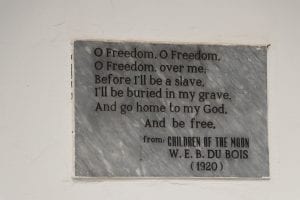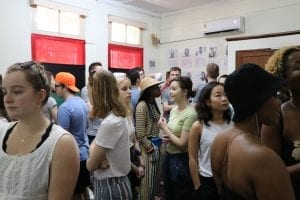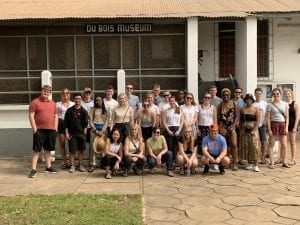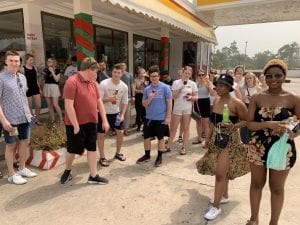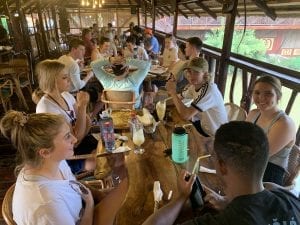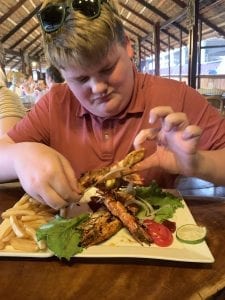With our long day of travel behind us and a good night’s sleep, we woke up Sunday morning feeling well rested and were met with a delicious breakfast of fresh mango, pineapple, chicken and bread at the Pink Hostel.
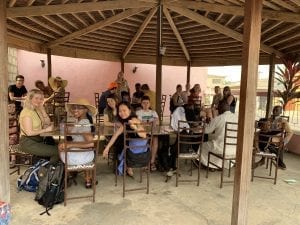
After breakfast, we got our things together and returned to the courtyard of the pink hostel where professor Abdulai shared some wisdom with us, reminding us why we are here and what we should be focusing on. He referenced a story from the Alchemist, in which a man is told to go admire the beauty of a house while holding a spoonful of oil. Upon his return, he is asked about what he saw. He realizes that while distracted by the beauty of the house, he spilled his spoonful of oil. Abdulai used this as a metaphor for us to remember the purpose of our trip, in that despite the beauty and much fun we will have, we are here to study the history of slavery and must not lose this focus. Throughout the day, he reminded us not to “spill the oil”.
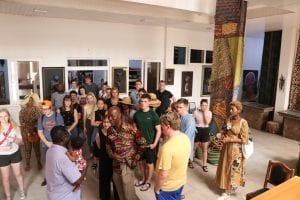
After this talk, we got on the bus to get our first glimpses (in the daylight) of the coastal city of Accra. The city was alive with movement, as many people filled the streets dressed in their church attire, to attend Sunday services. We admired the city from the bus while Abdulai and Chris searched for an ATM to get money out.
When they returned, we walked to our first destination—Kwame Nkrunah Memorial Park and Mausoleum— and were met by a tour guide, Mr. Quao. As we walked the pathway towards the memorial, he explained how the many trees lining our path were each planted by different African political leaders.
The main statue depicted the first president of Ghana, Kwame Nkrunah, delivering his groundbreaking speech celebrating Ghana’s newly gained independence. The statue stands in the place he gave his speech 63 years ago in 1957, which is relevant because Ghanaians were prohibited from this area, that was designated exclusively for British citizens to play polo. The statue depicts Nkrumah stepping and pointing forward, reminding Ghanaians, as he’s known to have said, “forward ever, and backwards never”.
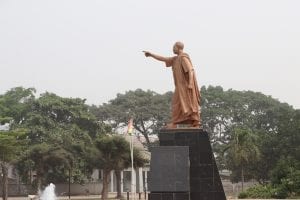
After seeing the statues, we walked into the Mausoleum and paid respects to Nkrumah and his wife Fathia’s final resting place. We learned a bit more about their lives and deaths. Nkrumah was born in Ghana and then moved to US, studying at Lincoln University in Pennsylvania. He eventually received his degree and a PhD from the London School of Economics with a dissertation on “Mind and Thought in primitive societies”. In his later years, he returned to Ghana and became Prime Minister and then the first president of the modern nation of Ghana. Despite his hard work in modernizing Ghana, various circumstances led to an overthrow of Nkrumah, and he lost political favor and lived in exile in Guinea for the last years of his life. Years after his death, he regained favor in Ghana and in 1992 this memorial was constructed. Papers released by the CIA in the following years revealed that the US was heavily involved in the political upheaval that resulted in Nkrumah’s exile. During his time as president, the US disliked Nkrumah, because they felt he was communist, pulling the rest of Africa with him, in the Cold War era.
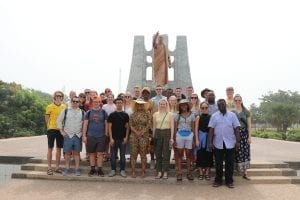
One student asked how the dislike for Nkrumah was so easy mended and returned him to a hero? Our guide explained that Western proganda depicted Nkrumah falsely as a dictator, rather than someone fighting hard for Africa’s freedom from western domination. After his death, the proganda died down and people were able to reflect on all that Nkrumah truly did for Ghana and Africa.
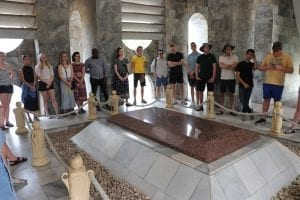
After the Mausoleum, we toured a museum filled with artifacts from Nkrunah’s life, such as pictures, books, and clothing. We also met the director of the site, who is from the Tamale and a Dagomba as Abdulai and he told us to enjoy our time and the rich culture of Ghana. On our way out of the memorial site, Abdulai pointed to an extremely tall and skinny tree that was planted in the site by the president of Zimbabwe in 2007, Robert Mugabe. He explained that this was the “tree that never died” because every time it appears to die, it always came back to life. This is symbolic of Nkrumah’s life as his legacy is resilient to those who attempt to destroy him.
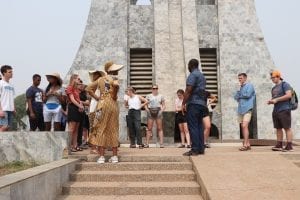
On the bus to our next stop— the Artist Alliance Gallery—Abdulai reminded us to be analytical, synthesize and ask questions about what we were learning and seeing. We arrived at the gallery and met the owner’s son who was born in Ghana but moved to the U.S at age 26 and lived there for 20 years. He recently returned to Ghana to help his father with this gallery. He spoke at length about the different artists and how the gallery was meant to capture the “Breath of West Africa”. During his tour of the gallery, he talked about the Kente cloth, and different artifacts. Abdulai asked him if they were any art or artifacts in this gallery related to slavery. He first replied “no”, and thinking about it explained that slavery was an emotional subject that he didn’t like to think or talk about. This was our first encounter with one of the many silences that surround our study as the legacy of slavery in Ghana is difficult and emotional. Abdulai pointed out that the silences and absences can teach us just as much as the presences. Why people don’t engage with or are silent about our past experience with slavery? The question is, is it only emotional, or shame or what society will judge one for our complicity? Or that we have moved on or now focused on what brings practical results such as tourism slavery and the like? These are questions the class will grapple with as we journey to the north, where most of the slave came from.
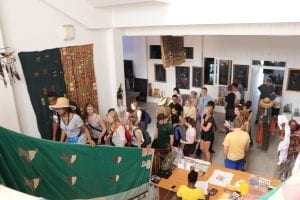
In the gallery, there was one single painting tucked away on the fourth floor that depicted Africans loading other Africans onto a slave boat in shackles. Abdulai noted that the group last year almost completely missed this painting, only discovering it as they were about to leave, as it was so hidden away. This hidden painting can symbolize how the subject of slavery is treated in Ghana, as many Ghanaians never think or talk about it, and many don’t even know that much of Modern Africa is shaped by our slave experience. This was a good reminder for us to not spill our oil, as we could’ve easily moved on from the gallery, forgetting our purpose here.
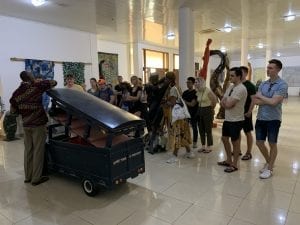
As we drove to lunch, we briefly touched upon “what a slave is” based on Abdulai’s article “The History of Evil”. We made a distinction between the historical and contemporary slavery. Abdulai emphasized that slavery was a relationship issue and the slave in Roman times was considered a “thing” who had no right to participate in Society (Iddrisu 2017). We thought about how we are all connected to slavery whether our ancestors may have been slaves or slaveowners. With this lesson on our minds, we headed to the Alliance Francaise where we dined on delightful meals of chicken, fish and rice.
Michael, Sarah, Zoe and Heri.
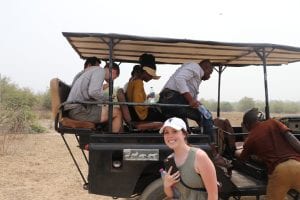
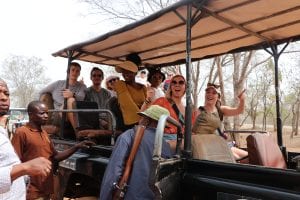
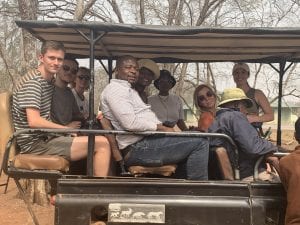
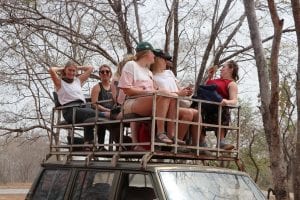
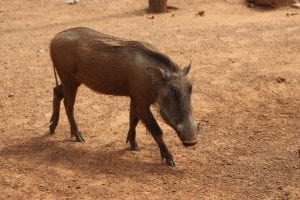
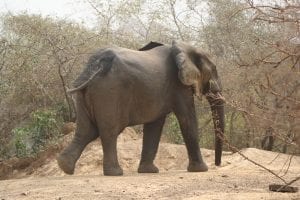

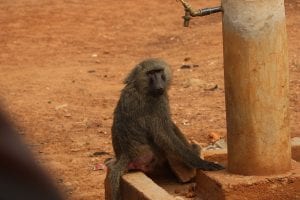

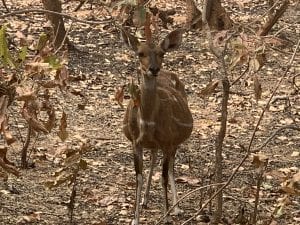
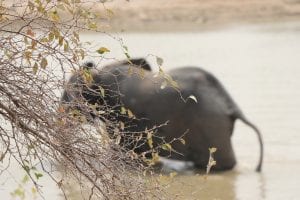
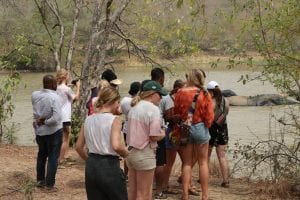
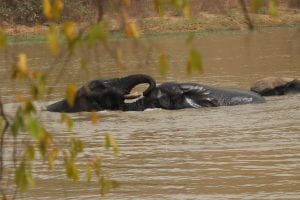

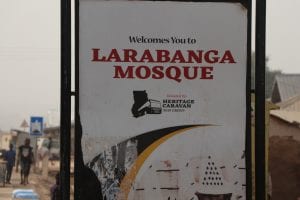

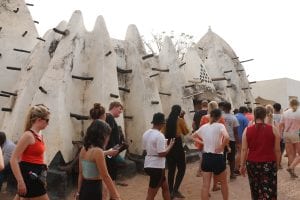
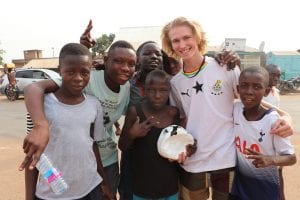

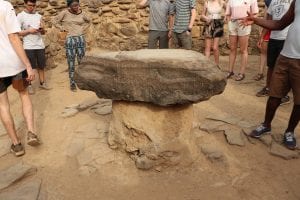
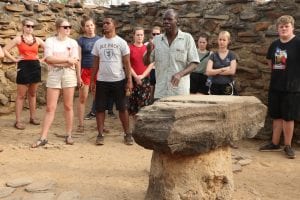

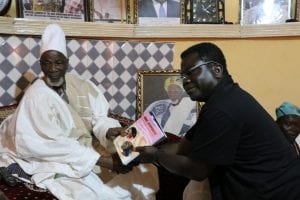
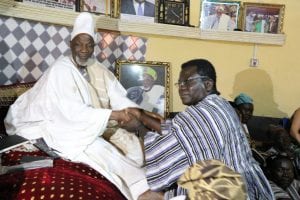
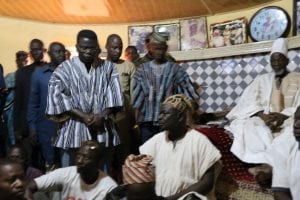
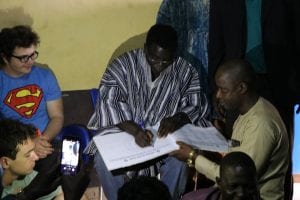
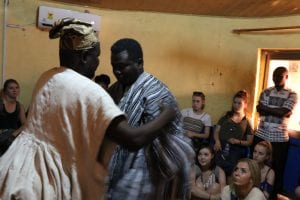

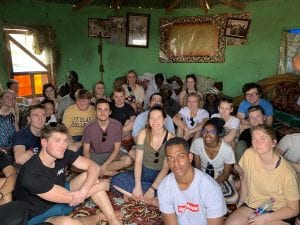
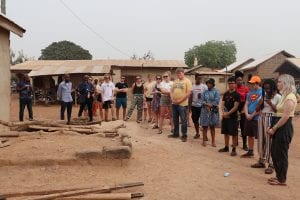
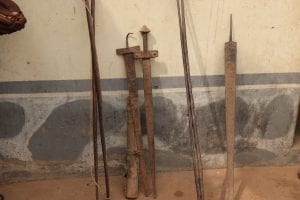
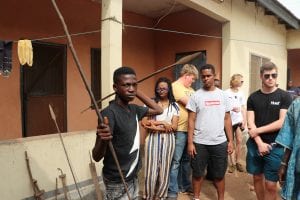
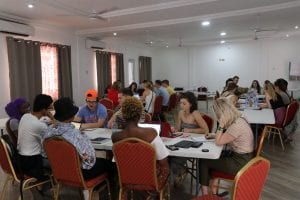
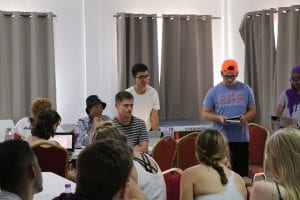
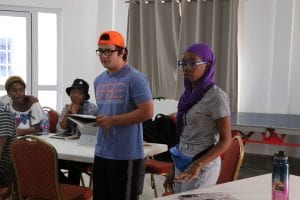
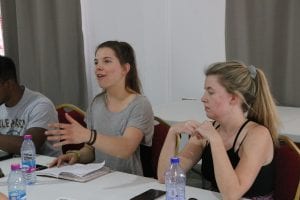

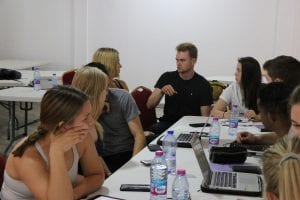
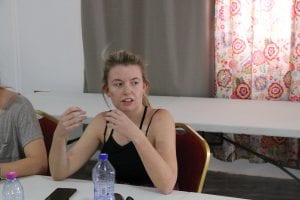
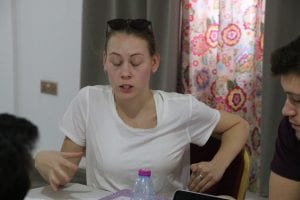
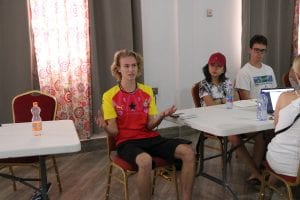
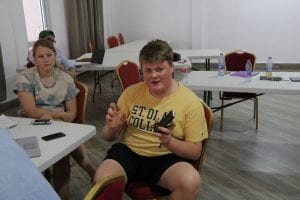
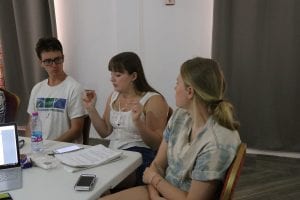
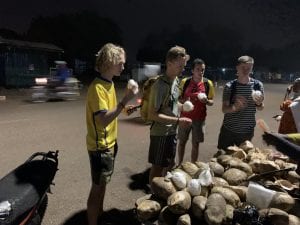
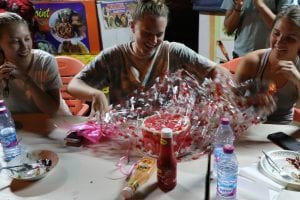
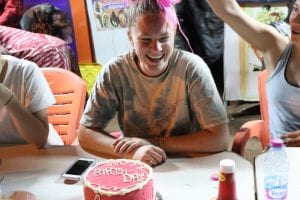
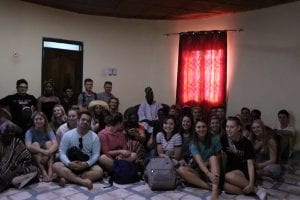
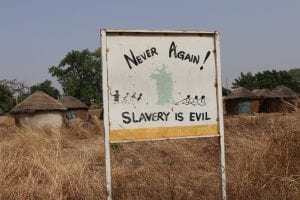

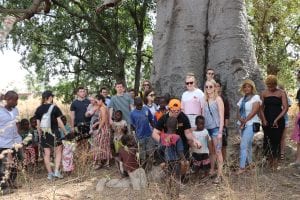
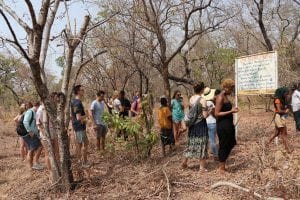
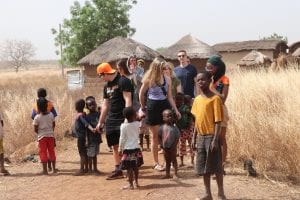
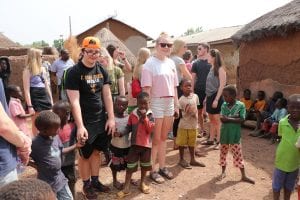

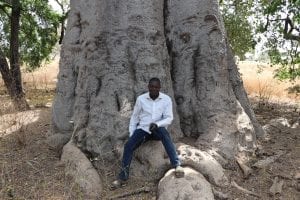
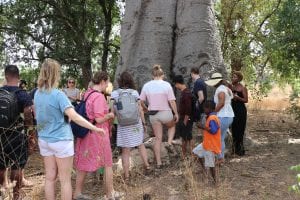


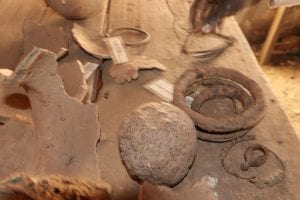
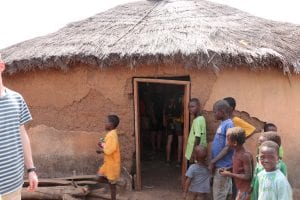

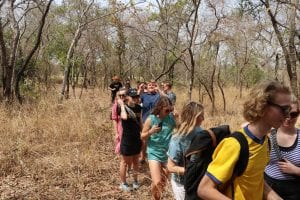
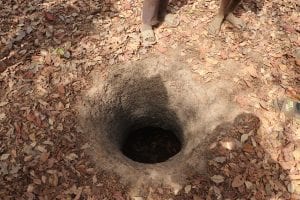
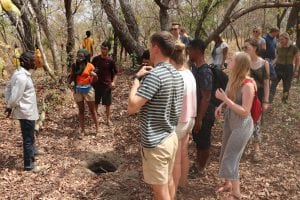
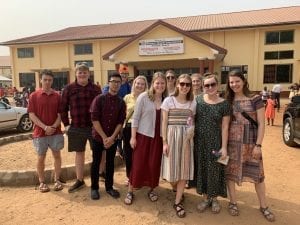
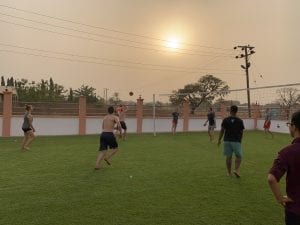
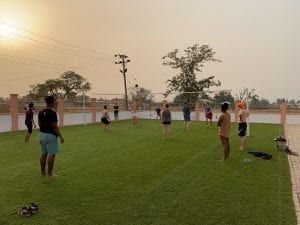
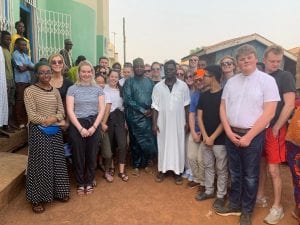
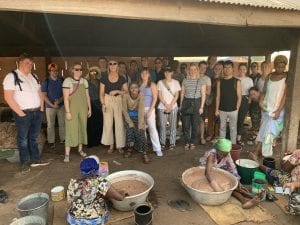
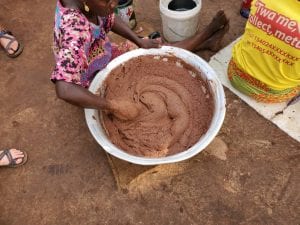
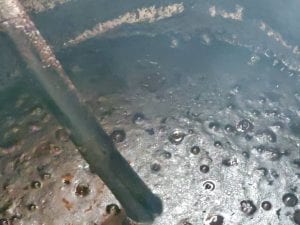
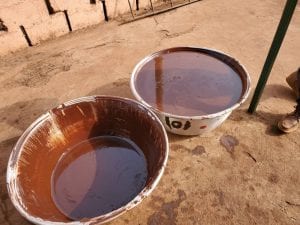
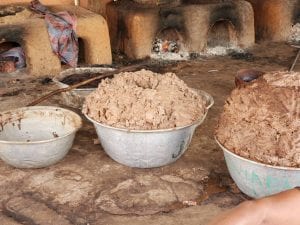
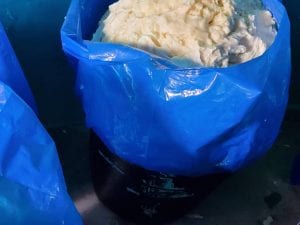
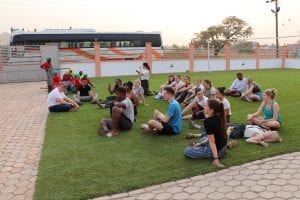
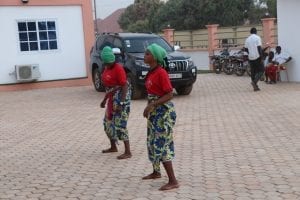
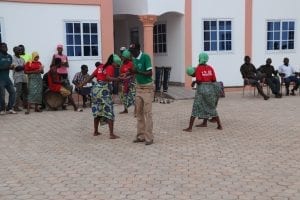

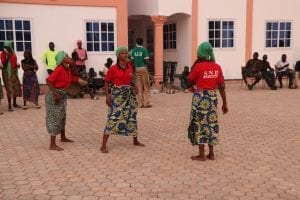
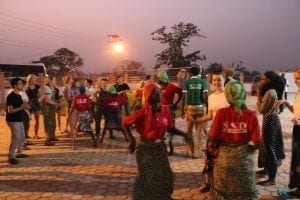
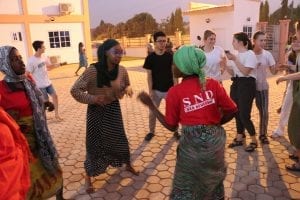
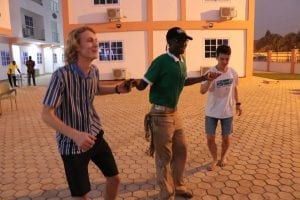
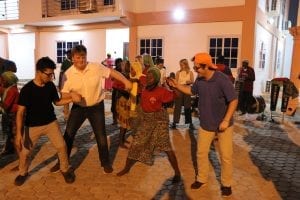
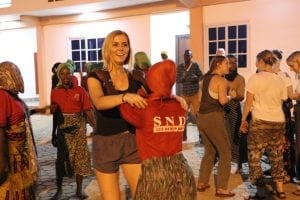
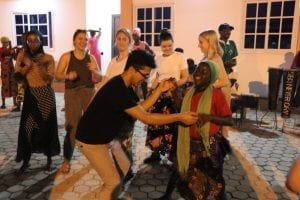
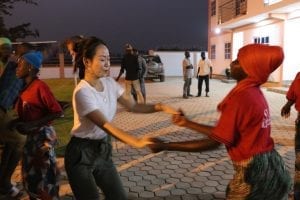
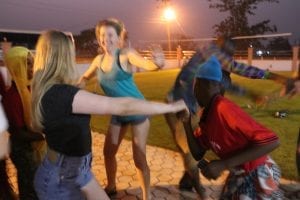
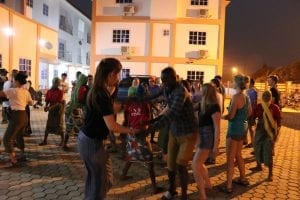
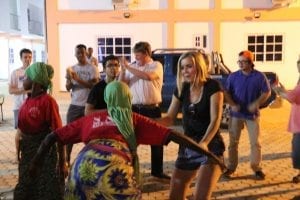
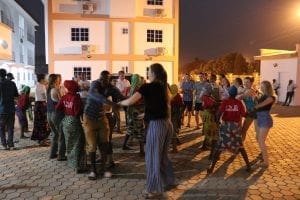
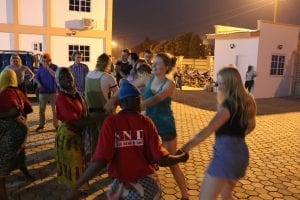
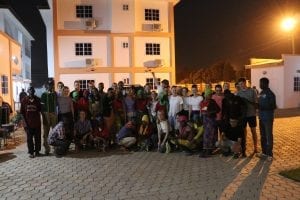
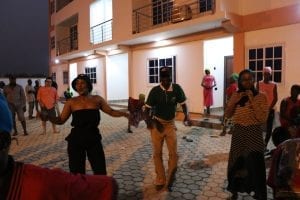

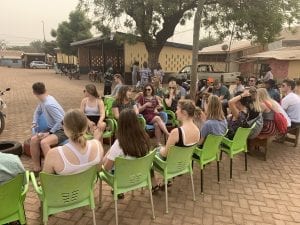
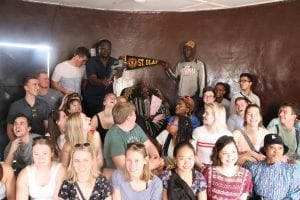
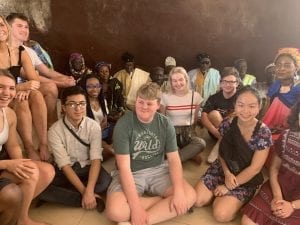
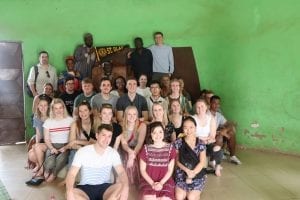
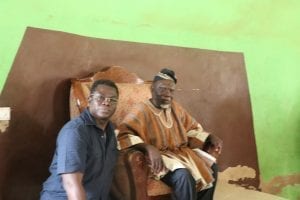
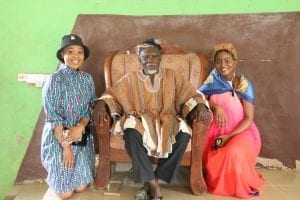

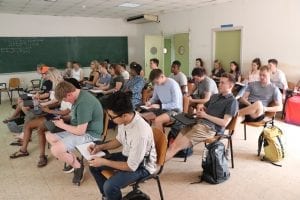



 We started the day with breakfast at the Davellen and Rosemay hotels in Kumasi. The rest of the day was spent on the bus driving towards Tamale where we will be spending the majority of our month. We stopped at a gas station pretty quickly into the drive to stretch our legs.
We started the day with breakfast at the Davellen and Rosemay hotels in Kumasi. The rest of the day was spent on the bus driving towards Tamale where we will be spending the majority of our month. We stopped at a gas station pretty quickly into the drive to stretch our legs.